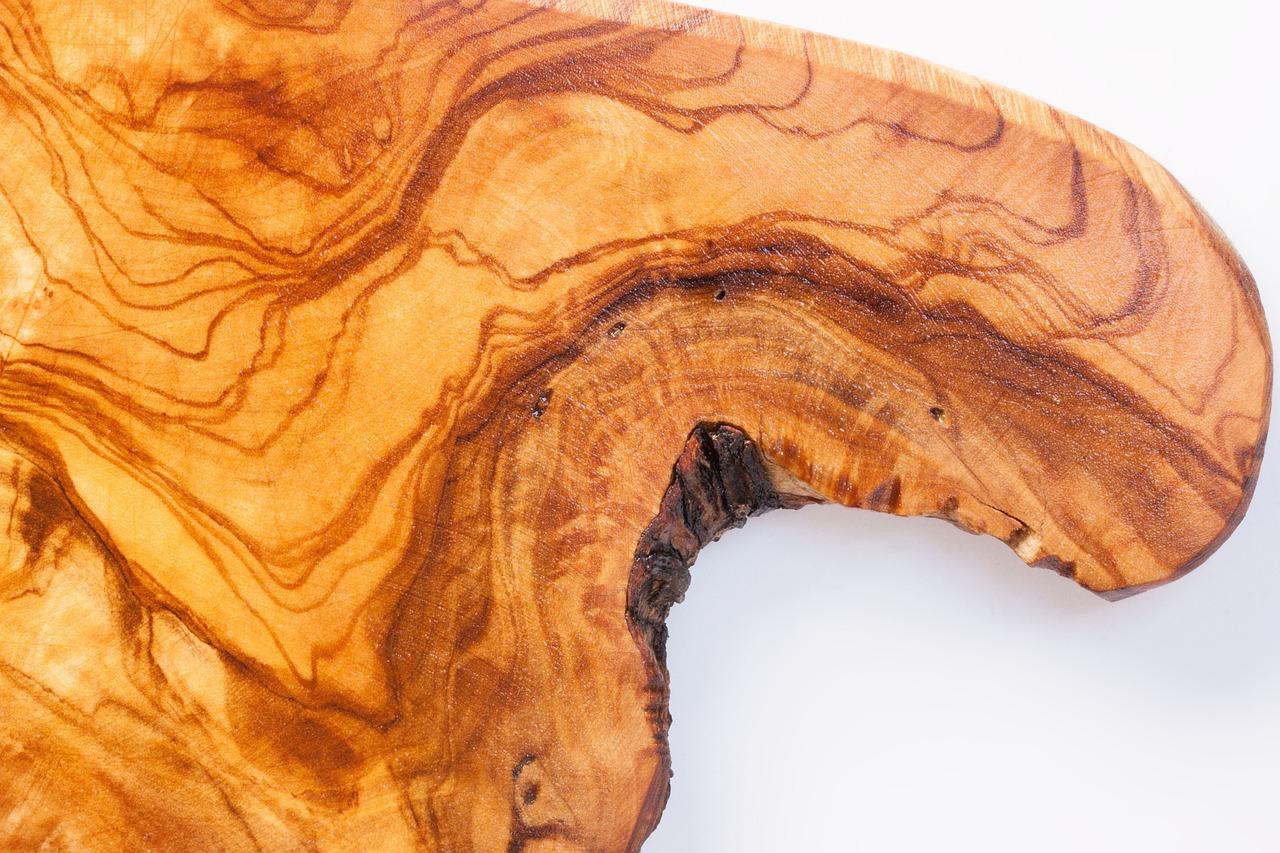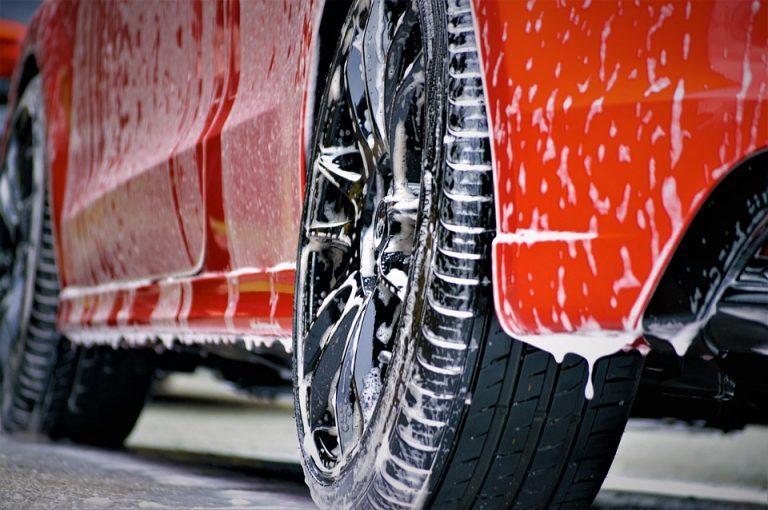All About Olive Wood
Discover the beauty and benefits of Olive Wood with Fresh Kit. Learn about its unique characteristics, uses, and more. Begin your exploration with us today!

About Olive Wood
Olive Wood, which is produced from the trees of “Olea Europaea” (European Olive Tree), is a hardwood with a pleasant aroma, colour, and grain quality. It is especially desirable throughout the world for its quality, durability, contrasting grain, and delicate finish.
A Primer on Olive Wood
Ever since olives have been grown commercially on a large scale, olive wood has been cultivated for its fruit in more than ten nations mainly in Europe. Its’ timber has been popular for woodworking, particularly structural for Millenia. It is very popular today as a high-end furniture and homewares material.
A natural substance that can be found in abundance, olive wood has a long history of use by humans. The trees are commonly known as ‘Olea europaea’ and are native to the northern regions of the world. Today, there are many uses for olive wood. In this article we will explore these benefits in depth so you can start using olive wood today.
The olive tree is common across a large part of Europe and the Mediterranean. It thrives in arid areas as well as coastal locations with enough rainfall to support it. The leaves of the tree have been used for making clothes, paper, soap and various other household items since ancient times as they are highly durable and resistant to decay.
Olive Wood Grain Up Close.
In the video below you’ll see Tawfiq Abu Halawah of Arresha.com cutting it on a bandsaw in different directions to show the interesting patterns and toning of the olive wood grain up close.
What is Olive Wood?
The olive tree is a common species found in many parts of the world. The trees are found in coastal areas where they can receive plenty of rainfall and have a suitable climate for growth. The olive trees are evergreen trees which means they continue to grow leaves throughout the year and are not seasonal. The trees can grow to a height of up to 20 meters with a trunk diameter of just a few centimetres.
The olive trees generally grow in coastal regions and are known for their high resistance to salt air. Two main types of olive trees are grown commercially. The first is the European olive which is grown in Mediterranean climates while the second is the African olive which is grown in African or tropical climates. The olive trees are deciduous and lose their leaves during the winter months. The olive leaves are highly resistant to pests, bacteria and fungi and are used for the production of olive oil, olive soap, olive foodstuffs and other items.
Olive Wood: Characteristics
Olive wood is a type of hardwood that is native to Mediterranean regions. It is characterised by its deep, reddish-brown colour and is known for its rich, oily, and earthy aroma. Olive wood has been used for centuries in building construction, furniture making, and fine art due to its natural resistance to rot and durability. Today, olive wood is still widely used in Europe and North America as a rich source of natural colourant.
In addition to its aesthetic appeal, olive wood is also prized for its unique structural properties. Due to its density (7.1 kg/m3), resilience (0.63 MPa), and stability (0.68% compression), olive wood provides excellent resistance to compression and tension stress when compared to other woods. This makes it an ideal choice for use in heavy construction projects such as bridges and buildings. In addition, the presence of natural oils in olive wood makes it resistant to decay, mold, and insects.
Olive Wood’s appearance, costliness and hardness suit it well to use in high-end furniture, veneer, turned objects, and small speciality wood items, where cost isn’t so much of an issue as construction, cooking or heating, for example.
Olive Wood can be described as being cream-orange or yellowish-brown, with darker brown or black, contrasting streaks. Olive Wood can be distinguished by its burl, curly or wavy grain, or wild grain. Straight, interwoven, or wild grain is common. It has a natural lustre with a moderate degree of volume.
Olive Wood is easy to work with and has good stability, but it may tear out during surface operations. It glues and finishes well. It has a distinctive, fruity scent when being worked.
Because of the fruit’s economic importance, healthy, cultivated Olive trees (O. Europaea) aren’t felled for lumber; availability is generally limited to pruned branches, trimmings, and diseased/storm damaged orchard trees. Short lumber, turning squares, and burls are occasionally available from wild trees, as well as the closely related East African Olive (O. capensis). Prices are very high.
For Olive growing in North America, the most common species is European Olive (O. europaea), which is easy to grow and has a high oil content. There are several cultivars available, with varying levels of susceptibility to pests and disease. The tree is moderately hardy, tolerating temperatures down to 10F and withstanding wind and flooding. It’s a good choice for a small backyard, urban lot, or anywhere else limited space is an issue.
Benefits of Olive Wood
- Resistant to Corrosion
Olive wood is highly resistant to corrosion and can be used for a range of applications that would require high corrosion resistance. - High Durability
Olive wood is highly durable and can be used for a wide range of items that need to be resistant to high levels of moisture. - High Absorption of Moisture
Olive wood is known for its excellent moisture absorption properties that make it ideal for use in construction applications where it can be used as the structural component of building materials. - High Resistance to Heat
Olive wood is resistant to heat, making it ideal for use in kitchens and outside areas where it can be used as a structural component of outdoor furniture. - Versatile
Olive wood can be used in a variety of items that require structural components such as furniture, boats, bridges, houses and a range of other items.
Although light, olive wood is strong enough to withstand the test of time and is often utilised for projects where weight is not an issue. In addition to its strength, olive wood has a wonderful look because of its lovely grain. It is not susceptible to rot, insects, or fire, making it a fantastic material for a variety of projects.
Olive wood is an excellent timber to work with because whilst it is strong and durable, making it a great option for long-term use, it is a highly workable material.
There are a lot of applications for olive wood, including sculpture, carving, and furniture in art and architecture. It is strong, durable, good-looking, and long-lasting, among other qualities. It doesn’t require any special treatment or care to look stunning.
From a consumer standpoint, because of its toughness and longevity, olive wood is a fantastic option for people who want a strong, long-lasting material. Particularly when it comes to kitchenware such as chopping boards, utensils etc. that will get a lot of wear and tear. Olive Wood stands up to daily use very well and will last a lot longer than cheaper, softer alternatives.
Uses of Olive Wood
It is a popular choice for smoking fish, as the pungent nature of the wood imparts a subtle flavour to the meat. The aroma of olive wood is popularly associated with Mediterranean cultures and can be used to create a warm, welcoming atmosphere that reflects the tranquillity of the sea.
People make high-end furniture, dishes, musical instruments, and souvenirs out of olive wood, in addition to using it as firewood, grilling wood, and smoking wood. When food is cooked with olive wood, the wood gives it a particular flavour and smell.
People produce a lot of olive wood products for use in the kitchen, particularly in Mediterranean countries such as Croatia, Italy, Greece, Spain, etc. There are plenty of olive wood products available for kitchen use. For example, chefs frequently use cutting boards, serving boards, knife handles, bowls, cutlery, prosciutto racks, pot mats, and serving bowls made of olive wood.
Souvenirs are also a common type of products made from olive wood, including bracelets, emblems, picture frames, pens, wine and olive oil racks, candle holders, ashtrays, keychains, religious works of art, and so on.
We use Olive Wood to make:
- Decorative, Artisan Boxes
- Charcuterie Boards
- Chopping Boards
- Bread Boards
- Cheese Boards
- Wood Wall Art
Video: Tunisian Olive Wood Industry
Tunisia is famed for its production of Olive Wood and its skilled artisans who work with the timber to create traditional tools for agriculture, homewares and furniture. This video goes into depth about the uses of olive wood and the industry as a whole in one particular part of the world, which is interesting if you want to learn more about the impact of woodworking, wood production and sustainable management:
FHI 360 and the National Office of Handicrafts are collaborating to support Tunisia artisans, particularly women in rural and deprived regions, in upgrading their handicraft value chains. The Collaborative Action for Handicraft Exports project, also known as ACEA, is being funded by the U.S. Department of State and is being executed by FHI 360.
Use as a smoking wood in cooking
Another use of olive wood is as ‘smoking wood’ for food. It’s especially good for chicken, beef and pork.
For example, you can smoke ham or chicken with this wood. This will give your food a wonderful, aromatic smoky flavour. It’s an easy and simple way to make your food taste great.
It’s recommended to soak it in cold water for a few days before cutting it into pieces. This will help remove any chemical substances that may be on the wood, making it easier to smoke.
The best way to smoke food with olive wood is to cut it into small pieces and place it on top of the smoker’s fire. For best results, use alder, apple or fruit woods alongside it, for sweetening the smoke flavour.
Olive Wood is also great for using in a pizza oven. The smoke from the wood will add a nice flavour to your pizza. Olive Wood also works great for smoking salmon. It has a subtle smokey taste that’s perfect for salmon. You can also use Olive Wood for smoking meat.
Use as a Firewood
Despite the fact that olive wood is one of the most dense firewoods available today, with over 900kg/m3 (62lbs/ft) density, it is not as commonly used as other firewoods. The reason for this is that olive wood is not as common and consequently costs more. In addition to its high cost, olive wood is also difficult to find.
Growing Olive Trees for Fruit, Oils and Wood
In the UK, olive trees can be grown in pots or in the ground. In either case, you will need to take a few precautions to ensure that your olive tree thrives and produces fruit. The most important thing to remember is that olive trees need heat. In the UK, we have an abundance of clay soil, so you can grow your olive tree on a patio or in the ground.
Video: Owner Experience:
Video: Caring for Olive Trees in the UK:
If you choose to grow your olive tree in a pot, make sure that the soil is draining well. The soil should also be well-amended with compost, and you can add enough water to keep the soil moist. Olive trees grow best in Mediterranean-style climates, so you will need to plant your olive tree near a sunny spot, but not in direct sunlight. Growing olive trees in pots is also a good option if you don’t have access to soil.
Endangered Species Protections
Olive Wood is not listed in the Appendices of the Convention on International Trade in Endangered Species of Wild Fauna and Flora or the IUCN Red List of Threatened Species.
However, it is considered a vulnerable species by the Government of India, and Olivewood is protected by law. Though Olivewood is not listed in the Appendices of the Convention on International Trade in Endangered Species of Wild Fauna and Flora or the IUCN Red List of Threatened Species. It is protected by law in some countries and regions such as North America and Europe, though not in most Asian countries due to cultural traditions and the timber’s resemblance to Cherrywood. Olivewood is not commercially exploited in the wild, but there are occasional cases of illegally harvested trees in some parts of Asia.
Conclusion
Olive wood is an important natural resource in Europe and North America. Olive wood has also been used in the Middle East as a construction material for centuries. The olive tree, especially the European variety, is a common species found in many parts of the world.
The olive tree is known for its strong and durable wood, which can be used for a wide range of decorative and practical applications. People have historically used the wood to make furniture, veneer, and other fine items. However, there are other ways that olive wood can be used, including as raw material for producing energy and as a fire-starter.
Olive wood is a hardwood that is used for many purposes and is highly prized for its strength and beauty. The best olive wood comes from wild trees, because it’s more durable and less prone to decay than cultivated trees. It’s a high-quality timber that’s often used in projects where strength and beauty are more important than weight.
A lot of olive wood is exported from the Mediterranean region, Africa, and parts of the United States and Canada, where demand for the natural product is high. Olive wood is also used for culinary purposes, although most of the world’s olive oil is produced from the fruit of other species.
To see some of the creations we’ve made using olive wood, take a look at our epoxy wood art gallery which features an exclusive selection of bespoke river tables and boards made using olive wood.
You can get more info on the process and see some more of our olive wood art up close in this article: Crystal Cove Epoxy Art






